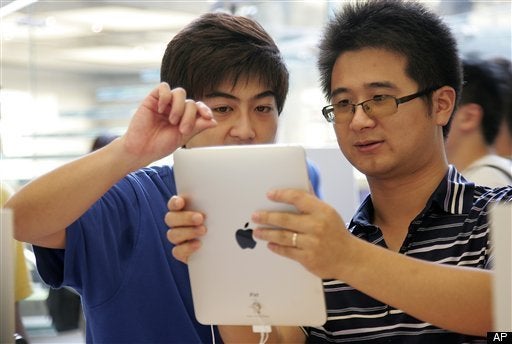
I finally figured out what's special about the iPad. It is the first book that makes its own light -- if not the first, then the first commercial success.
It hit me as I finished reading Brilliant: The Evolution of Artificial Light by Jane Brox, published this year by Houghton Mifflin Harcourt. Brox traces the story of mankind's desire to keep the party we call civilization going after the sun sets. The book follows man's advances in artificial illumination and its impact on society from the cave painters of Lascaux to modern light emitting diode (LED) technology. General readers will enjoy the book: it is more about how light changed how people live than technology.
Of course, I read the book on my iPad -- in an otherwise pitch-dark room, while my wife snoozed away undisturbed. Because the book was brand new, it was not available on the Apple iBook service. So I downloaded the Kindle app on my iPad and ordered the electronic book from Amazon.
Then I discovered a feature of the Kindle app that the Apple iBook app lacks: reversed fonts -- white type on black pages. This is a silly idea for paper books: hard to read and a colossal waste of ink. It is also a silly idea for ordinary Kindles that, like paper books, are read by reflected light. But with a self-lit, back-lit device like an iPad, it becomes a new way to experience books. Even with very low light levels, the contrast of the white letters against the black page is outstanding. In a dark room, it is very readable.
Funny how with all the advanced technology, all it takes is one tiny feature to change the experience: there is practically no excess light to bother other people. Every other way of reading books involves an external light. Book lights small enough to just light the book are too dim to provide the contrast that makes reading comfortable. Or, they can't light the whole page. Book lights that provide enough light wind up bothering the non-reader in the room: not what you should do if your spouse would rather sleep.
The idea of an electronic book reading "pad" can be found in computer science literature even before PCs. University and industrial research labs started working on the concept even in the 1970s: I remember seeing mock-ups at Xerox PARC in my graduate student days. Gene Roddenbery showed the idea, almost in passing, as the way the crew of the Starship Enterprise read for off-duty entertainment in Star Trek: The Next Generation. Those episodes were produced in the early 1990s: almost twenty years before the iPad.
It took forty years for all of the components of a book reader to finally come together: battery, screen, processor, software, network, and so on. The LED back light technology was the last to mature, and it was critical to getting the weight, form factor, and power consumption to come out right.
When I first wrote about the iPad, a Huffington Post regular challenged me to revisit my review after more experience. I stand by the observations I made back in June. I still await the wireless printing capability promised for this fall. I'm still frustrated by the lack of calendar sharing and the maddening policies promulgated by the Apple Store. I still find the iPad my preferred device for travel: if it had its own frequent flier card, it would be due for a free ticket.
When I was a kid, I'd smuggle a book and a flashlight into bed. The iPad is better.
